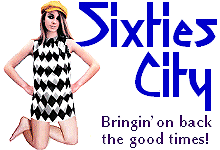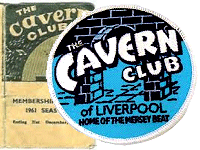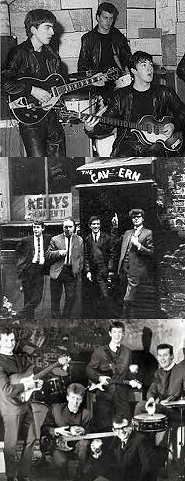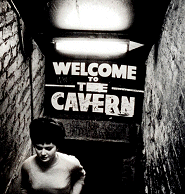


 |

|
 |
 
|
Towards the end of the 1950's a musical revolution was about to unfold. Liverpool, famous as one of the UK's largest shipping ports, had long-established connections with the United States and Europe. Many people from Liverpool and its surrounding areas worked at the port of Liverpool and travelled the seas across the shipping lanes between America and Merseyside. A legend has developed over the years that these workers (known locally as 'Cunard Yanks') brought into Liverpool unreleased records from such American artistes as Ray Charles, Little Richard, early Elvis, Buddy Holly and other musical styles such as R&B, Blues, Motown, Soul, C&W and Gospel music. The emergence of the Liverpool sound that was to become known as 'Merseybeat' was virtually down to one man - his name was Bob Wooler. Bob became known the world over as the DJ at the world famous Cavern club in Mathew Street, Liverpool, although the term 'DJ' was not the same as today's hi-tech DJ's mixing and providing a total show. Back then the DJ was more of a combination stage manager and compere, introducing the bands and providing music as a cover for the bands changing over between sets. Live music was the order of the day and as many as eight bands would appear on any one night at regular dances held throughout the week at dozens of venues across Liverpool and the surrounding area. Bob Wooler bought his record collection from a local shop in the centre of Liverpool called N.E.M.S, which stood for North End Music Stores. The shop's owner was a man by the name of Brian Epstein whose part in the story of the rise of the Mersey Sound was yet to unfold, but in a few short years his name, too, would be known the world over as the manager of a certain local beat group who played lunchtime sessions at The Cavern club. The Mersey Sound grew from a musical craze that was sweeping across the country and had converts in Liverpool too. 'Skiffle' music was played on home-made instruments such as a tea chest bass, a metal washboard and a banjo or guitar with a number of vocalists and the music could be performed by almost anybody. The initial craze was led by musician Lonnie Donegan and his recording of 'The Rock Island Line' was a major hit in the UK charts. Seemingly overnight hundreds of youngsters started up Skiffle groups but many were short-lived affairs and, as the months went by and the craze waned, most eventually disbanded. Some, however, remained and evolved with the rapidly changing musical tastes. John Lennon's first band was called 'The Quarrymen' which was eventually to add to its members both Paul McCartney and George Harrison and develop into 'Johnny and the Moondogs',' Long John Silver' and 'The Silver Beetles', before becoming 'The Beatles' in 1961. Many Liverpool groups, like The Quarrymen, decided to put into their sets American recordings they heard played by Bob Wooler or played on request at the N.E.M.S record shop - records that seemed so magical when played on the shop's Dansette record player. The groups competed with each other to be the first to have the latest imported record transcribed and included in their sets. These 'cover' versions were sometimes speeded up and, together with altered melodies and phrasing, became generically known as 'The Liverpool Sound'. During the early years of the 1960's there were over 400 groups performing in and around Liverpool in the many dance halls, jive rooms and working men's clubs. It was during this period that a new name for this style of music was born and continues to be used today - 'Merseybeat' - and it heralded the start of the Sixties 'Beat Boom'. The most famous of these groups were, of course, The Beatles, but they also paved the way for other legendary Liverpool bands like Gerry and The Pacemakers, The Big Three, The Searchers, The Fourmost, The Merseybeats, Billy J Kramer and The Dakotas and a whole host of others. As the sound spread outwards along the 'A' roads of the UK, bands in other cities heard and reacted to the call and the nation began a love affair with not only Liverpool's 'Fab Four' but also the musicial heritage that came with them and other Liverpool acts. Everywhere across the UK new bands were formed like The Hollies, Herman's Hermits, The Dave Clark Five, The Kinks, The Rolling Stones and so many others, with their own styles often assuming regional names such as 'The Manchester Beat' or 'The Tottenham Sound'. Sixties 'Merseybeat' had taken a stranglehold on the British music charts and the legacy of the 50s artistes from across the ocean developed into the 'Beat Boom', which was destined to come full circle and return to the shores of America during the period known as 'The British Invasion'. There can be no other venue in the history of Rock'n'Roll that summons up more excitement and mystery than Liverpool’s Cavern club. Every year hundreds of thousands of people from all over the world travel to Liverpool to visit The Cavern, to walk down its stone steps into the dark interior and stand looking towards a small stage situated at the end of a narrow arched tunnel. To let the waves of nostalgia flow over them and travel back in their minds to those far-off days of the Sixties and imagine that there, on that tiny stage, are four young men and that once again the sound of The Beatles is reverberating around the cave-like walls. Somewhat sadly, the reality is that The Cavern that stands there today is not quite The Cavern that saw the birth of the greatest group the world will ever see. The story of how this came to be is a story that has elements of stupidity, sheer neglect and, at times, even enters into the realms of comedy. The real story of what happened to what should have been Liverpool’s greatest treasure is finally told here - so let's go back, through the mists of time, to the original Cavern . . . . 
|
| This
article and the Bob Wooler interview are They are an accurate live recreation of a Sixties pop group during the Beatlemania years as seen on shows like 'Ready Steady Go’ and ’Top of the Pops' with not only the look but the live sound of the bands they perform, bringing back the vibrancy and passion of the originals.They use original instruments from the period, names like Rickenbacker, Epiphone, Gibson, and the famous Hofner Violin Beatle Bass, together with a Pearl Ludwig drum kit, they also use original amplifiers, names such as Marshall and Vox. The Sixties look is completed by the use of original stage clothes, and the famous Cuban heeled black Beatle boots. |
|
|
All
Original Material Copyright SixtiesCity
Other individual owner copyrights may apply to Photographic Images |